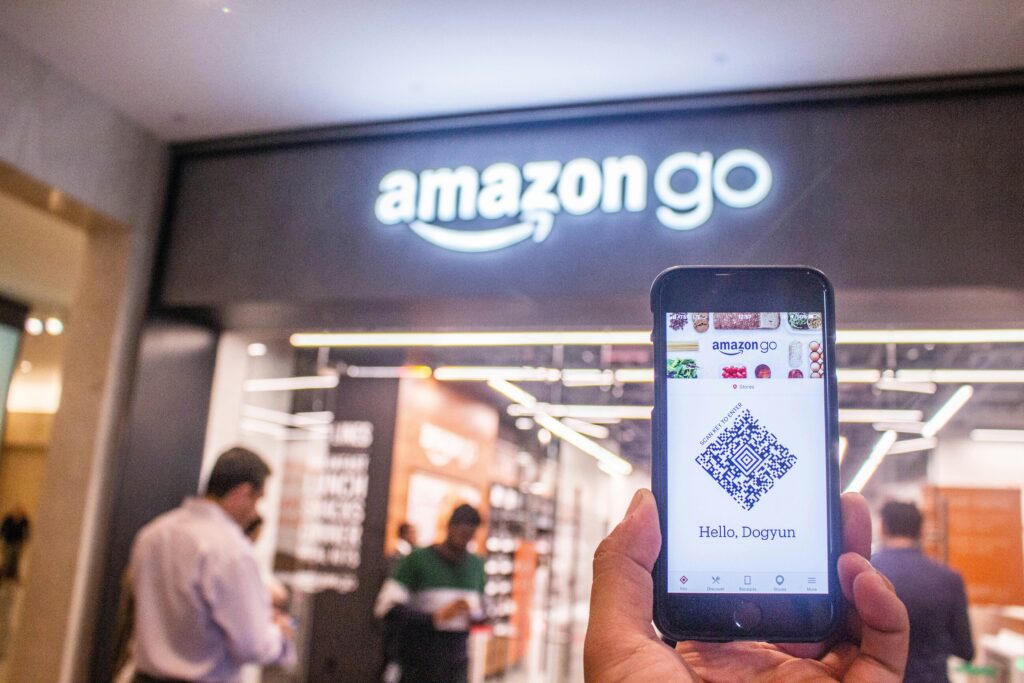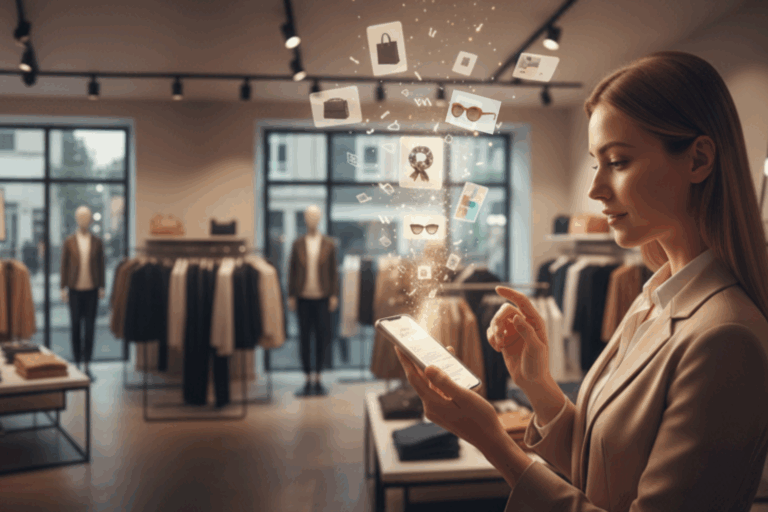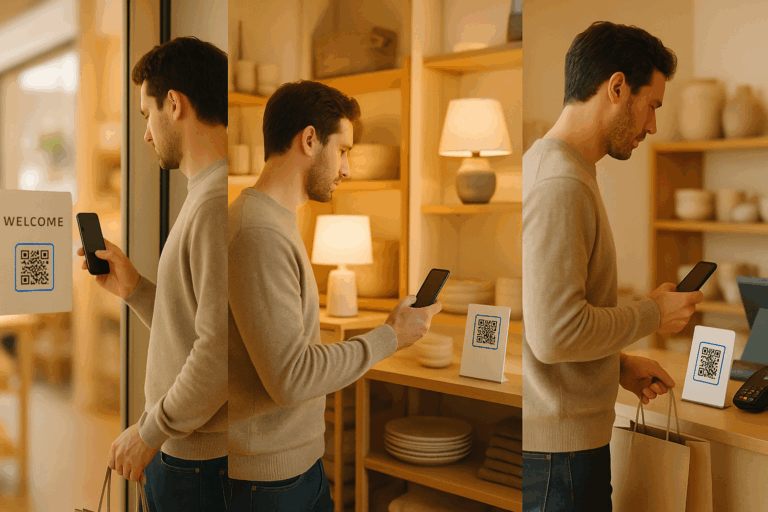What are Cashierless Stores?
A new wave of retail technology is changing how we shop. Cashierless stores let customers walk in, pick up what they need, walk out, and get charged automatically. Apart from the famous Amazon Go, retailers such as Carrefour, Sainsbury’s and 7-Eleven are also testing or using frictionless technology.
Stores must compete with the ease and convenience of online shopping with innovative technology like cashierless stores. Gen Z, who have grown up in a digital world, are comfortable with such self-service options. Their affinity for technology-driven, frictionless experiences has led them to embrace these autonomous shopping environments, valuing the convenience, speed, and instant gratification they offer. Apart from Gen Z, customers from other age groups are also accustomed to the easy and convenient online shopping experience with a few clicks of their finger. To stay in the game, retailers must recognize and adapt to this trend, investing in cashierless technologies and self-service solutions to meet the evolving expectations of the evolving tech-savvy consumers.

How Cashierless Stores Work
Cashierless stores use a combination of cameras, weight sensors, machine learning, and AI-powered systems to track the shopper’s movements and the items they put into their baskets.
Customers enter the store by scanning a smartphone app or credit card, connecting their identity to their visit. When they shop, computer vision technology identifies products as they’re picked up or returned to shelves, while pressure-sensitive shelves detect when items are removed or replaced. Machine learning algorithms process this data in real-time, maintaining an accurate virtual cart for each customer. As shoppers move through the store, their selections are automatically added to their accounts. When finished, customers simply walk out, and their linked payment method is charged for the items they’ve taken, and a digital receipt is automatically generated and sent to a customer’s smartphone as they leave the store.
Benefits of Cashierless Stores
For Customers
From the customer’s perspective, cashierless stores provide unparalleled convenience and speed.
No more waiting in lines or dealing with frictions at checkout – customers pick their items and go. It saves precious time, eliminating the frustration of long queues, especially during busy hours. The experience feels more private and relaxed without the usual checkout interactions.
For Retailers
For retailers, cashierless stores present rich opportunities to enhance operational efficiency and gather valuable customer insights.
- Improve store layout: Removing checkout counters unlocks valuable floor space, letting stores display more products and create better shopping paths. The extra room means more products and a smoother flow through the store.
- Capture in-store customer data: Every shopping trip generates detailed data about what people buy and how they shop. Retailers gain access to detailed, real-time information about customer behaviour, product popularity, and shopping patterns. Such customer data can be added to the customer’s anonymous profile, enabling the retailer to launch personalised campaigns, engage with the customer after they leave the store, and enhance retention. Retailers can also leverage the data to optimise store layouts, refine product placements, make more informed inventory decisions and conduct predictive analysis.
- Reduce labour costs: Cashierless stores require less staff than their traditional counterparts, as well as less costs to train employees. Reducing labour costs associated with traditional checkout operations is another substantial benefit, allowing retailers to reallocate staff to focus on customer service and experience enhancement.
- Enhance customer experience: By offering a modern shopping experience, retailers can attract tech-savvy customers, particularly younger demographics such as Gen Z, who value convenience and digital experience. When customers have a pleasant experience in the cashierless stores, they are likely to return, turn into loyal customers, and recommend them to others.
Challenges Ahead
While cashierless stores offer exciting possibilities, the implementation still faces challenges.
- Technical implementation: Cashierless stores require a significant upfront investment in cameras, sensors, and AI systems, which are often difficult for smaller businesses. Keeping these complex systems running smoothly demands ongoing technical expertise and resources. When something goes wrong, stores need backup plans to avoid disrupting the shopping experience.
- Privacy concerns: Privacy laws have already challenged some cashierless ventures, as seen with Amazon Go in Germany. Strict regulations like GDPR and the Federal Data Protection Act mean stores must carefully handle customer data. Many retailers now opt for hybrid systems that balance checkout convenience with privacy protection, implementing data minimisation practices and transparent processing policies to comply with local regulations while maintaining the benefits of automated checkout systems.
- Customer acceptance: While many customers have accepted cashierless stores, retails still need to build trust in the automated system, and guide customers through the learning curve. Regardless, many shoppers are still hesitant when buying produce that needs to be weighed, especially in large quantities. This is one of the challenges Amazon Fresh, the pioneer in this field, faces.
- Security risks: Self-checkout systems have increased theft rates, with nearly 39% of grocery shrink stemming from these lanes and reports showing theft rates up to five times higher than traditional checkouts. The sense of absence of human oversight emboldens some shoppers to exploit system vulnerabilities, like skipping item scans or committing vandalism. Effective theft prevention still heavily relies on vigilant staff, whether as store associates, security personnel, or loss prevention officers.
The Future of Retail Checkout
As cashierless stores redefine the future of retail, they promise a streamlined, frictionless shopping experience. Yet, retailers must blend this innovation with solutions that enhance data-driven engagement, such as refive’s smart in-store touchpoints, including digital receipts. This integration enables retailers to track customer interactions, build comprehensive profiles, and personalise experiences, bridging the gap between physical and digital retail effortlessly.
Looking ahead, we’ll likely see these systems spread beyond grocery into clothing shops, drugstores, and speciality retail. The goal isn’t just faster shopping – it’s about creating experiences that are efficient and feel pleasant and helpful, where technology works quietly in the background to make each visit better than the last.









